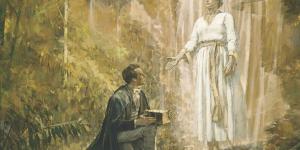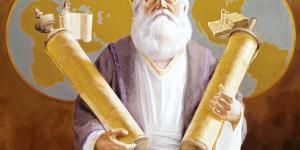You are here
Book of Mormon Central is in the process of migrating to our new Scripture Central website.
We ask for your patience during this transition. Over the coming weeks, all pages of bookofmormoncentral.org will be redirected to their corresponding page on scripturecentral.org, resulting in minimal disruption.
Gospel Doctrine Lesson #10: He Inviteth All to Come Unto Him

Scripture Block
2 Nephi 26-30
In 2 Nephi 26-30, Nephi prophecies that Lehi’s descendants, the Jews, and the Gentiles will all fall away from the truth. He foretells of the Savior’s mercy to them through the restoration of the gospel and the coming forth of the Book of Mormon.
KnoWhys
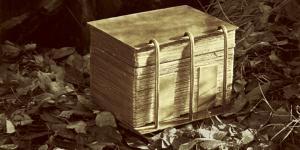
Why Would A Book Be Sealed?
2 Nephi 27:10
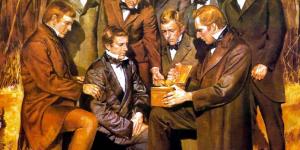
Who Are The "Few" Who Were Permitted To See The Plates?
2 Nephi 27:12-13
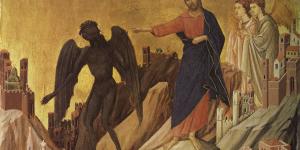
How Does The Devil Lead Us Astray?
2 Nephi 28:21
Articles
2 Nephi 26
Chart 171: "Nephi's Invitation," from Charting the Book of Mormon
The Book of Mormon is a very inviting book. Welcoming all, it turns no one away. Many verses in the Book of Mormon invite all people everywhere to come unto Christ. Through its sincere invitations, readers everywhere feel included in God's saving love. They accept that invitation in faith by repenting, forsaking their sins, being baptized, and going forth to do good under the guidance of the Holy Ghost and the Lord's inspired direction.
"We Labor Diligently to Persuade Our Children to Believe in Christ: 2 Nephi 25:21 to 26:11,"(link is external) by Rex C. Reeve Jr., from The Book of Mormon: Second Nephi, the Doctrinal Structure(link is external)
By revelation, the Lehites knew that in the future their seed would at times reject their testimony of Christ. Lehi, Nephi, Jacob and others labored diligently to persuade their children as well as generations yet unborn to come unto Christ and enter into his rest (2 Nephi 25:23; Jacob 1:5-7).
"Nephi's Message to the Gentiles,"(link is external) by S. Michael Wilcox, from The Book of Mormon: Second Nephi, the Doctrinal Structure(link is external)
Chapters 25 through 33 of 2 Nephi contain Nephi's final messages. They had a profound influence on later Book of Mormon prophets and have great relevancy today. Nephi addresses his comments to three main groups of people: the Jews, the descendants of Lehi, and the Gentiles. His commentary can be read as a whole, unified discourse which serves as Nephi's final testimony; much of it contains an explanation of the Isaiah chapters he has just quoted. There is a logic and organization which flows from chapter to chapter.
"Pattern and Purpose of the Isaiah Commentaries in the Book of Mormon,"(link is external) by Garold N. David, from Mormons, Scripture, and the Ancient World(link is external)
Davis goes through the various commentaries of Isaiah found throughout the Book of Mormon and discusses their role in the text. In 2 Nephi, Nephi quotes extensively from Isaiah. 2 Nephi 26-27 serve as Nephi's commentary on these Isaiah passages. Nephi finds Isaiah pertinent for both his generation and generations to come because of Isaiah's keen insight into the fate of the Jews and the Gentiles.
"Nephi's Convincing of Christ through Chiasmus: Plain and Precious Persuading from a Prophet of God,"(link is external) by David E. Sloan, from Journal of Book of Mormon Studies(link is external)
One of the principal themes of Nephi’s writings on the small plates is his desire to convince others of Christ. A second, related theme is his desire to write plain and precious things on those plates. Some of the most plain and precious writings of Nephi are those instances in which he used the name Christ in chiasmus or other forms of poetry. Perhaps more than any other portion of his words, Nephi intended these plain and precious writings to convince both Jew and gentile that Jesus is the Christ, the one true Messiah.
"The 'Familiar Spirit' in 2 Nephi 26:16,"(link is external) by Paul Y. Hoskisson, from Insights
Hoskisson discusses the exegetical background of the phrase "familiar spirit" found in 2 Nephi 26:16. While on first glance "familiar" may seem to connote "to be acquainted with", Hoskisson suggests that "familiar" in this context may have resonance in an ancient Near Eastern setting.
"Familiar Spirit,"(link is external) by FAIR Mormon
The words of the Book will speak low out of the dust as a ghost called up from the netherworld. The Book of Mormon verse emphasizes that the power to translate the Book of Mormon comes from God, not from channeling or necromancy: "the Lord God will give unto him [the translator] power."
"2 Nephi 26 and 27 as Midrash,"(link is external) by Grant R. Hardy, from Insights
In the Jewish tradition, eminent medieval rabbis would offer insight into established scripture. This rabbinic commentary, called Midrash, came to be regarded as authoritative as scripture itself. In 2 Nephi 26-27 we see Nephi provide commentary on the various Isaiah passages he quoted. Not only is this commentary useful in understanding Isaiah, but because Nephi's words have become authoritative scripture, it can also be considered a Midrash. Grant Hardy discusses Nephi's valuable contributions to the discussion on Isaiah through the lens of looking at Nephi's commentary as a Midrash.
"Bound with Flaxen Cords,"(link is external) by Paul Mauritsen, from Insights
While the phrase "bound with flaxen cords" may not initially strike the reader as particularly significant, this phrase finds resonance in the ancient Near East, where cords made of flax were notoriously strong and inflexible. This article discusses how this understanding of flaxen cords can help us understand the nature of Satan's cunning.
"Synagogues in the Book of Mormon,"(link is external) by William J. Adams, Jr., from Journal of Book of Mormon Studies(link is external)
Since Nephi talks about synagogues in the Book of Mormon, Adams discusses the nature of these synagogues. Jewish synagogues take on different forms and roles throughout Biblical history, so Adams goes through Jewish synagogues in different periods in Biblical history, and then discusses the possibilities of synagogues in Nephi's world in America.
"Synagogues in the Book of Mormon,"(link is external) by John W. Welch, from Reexploring the Book of Mormon(link is external)
Early on in Nephite civilization we see mention of synagogues as places of worship. While synagogues are often thought of as a later development in Judaism, Welch demonstrates the chronology of synagogues and also discusses the diversity in synagogue traditions, even within the Nephite culture.
"Nephite Insights into Israelite Worship Practices Before the Babylonian Captivity,"(link is external) by A. Keith Thompson, from Interpreter: A Journal of Mormon Scripture(link is external)
General historical consensus holds that synagogues probably originated during the Babylonian captivity, yet the Book of Mormon speaks of synagogues, sanctuaries, and places of worship in a manner which suggests that Lehi and his party brought some form of synagogal worship with them when they left Jerusalem around 600 BC. This essay revisits the most up to date scholarship regarding the origin of the synagogue and suggests that the Book of Mormon record provides ample reason to look for the origins of the synagogue much earlier that has become the academic custom.
2 Nephi 27
"Textual Criticism of the Book of Mormon,"(link is external) by Robert F. Smith, from Reexploring the Book of Mormon
2 Nephi 28
Chart 79: "The Ways of the Devil," from Charting the Book of Mormon
Embedded in Nephi's prophecy in 2 Nephi 28 are many phrases that describe the conduct of those who follow the devil. These sins, Nephi states, will pervade much of society in the latter days. Today they can be found well disguised as the philosophies and tendencies listed in this chart. Such conditions are symptomatic of society's passive acceptance of "false and vain and foolish doctrines" (2 Nephi 28:9) that can lead people away from God. Knowing how the devil works and being able to see his tactics in operation in the ideologies of the world around us help prevent us from being taken captive by Satan, who leads people "carefully down to hell" (2 Nephi 28:21).
"The Enemies of Christ: 2 Nephi 28,"(link is external) by Dennis L. Largey, from The Book of Mormon: Second Nephi, the Doctrinal Structure(link is external)
Second Nephi chapter 28 is a prophetic writing opening to full view important truths concerning several of the chief enemies of Jesus Christ and the restored gospel as follows: (1) false doctrines, identified as the precepts of men; (2) false teachers; (3) pride; and (4) Satan himself. The objective of this study is to show how, as President Benson taught, the Book of Mormon reveals the enemies of Christ.
2 Nephi 30
"White or Pure,"(link is external) by FAIR Mormon
Critics of the Book of Mormon have lambasted how "white and delightsome" was changed to "pure and delightsome" in subsequent editions of the Book of Mormon (2 Nephi 30:6). While some have pointed this out as trying to excise racist overtones from the Book of Mormon, FAIR sets out how this change was not a recent change to the text, and how the reading reflects the original intent of the translation.

